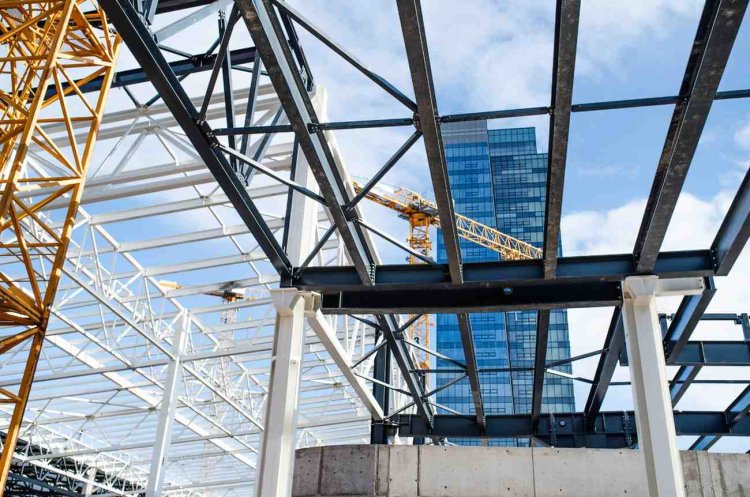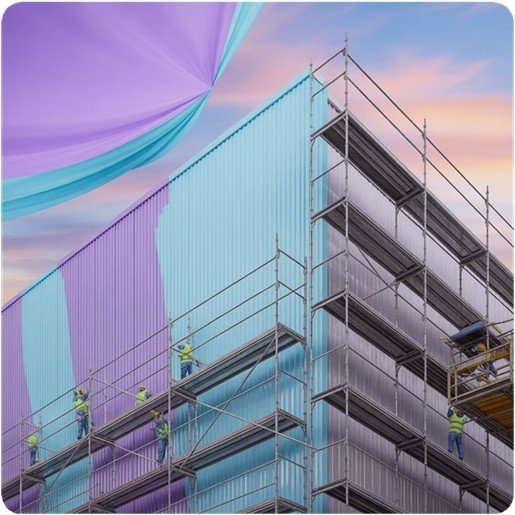The Backbone of Modern Construction: Why Steel Structures Dominate Commercial Projects
Steel has revolutionized the way we build. From towering office buildings to expansive manufacturing facilities, steel structures have become the preferred choice for commercial construction across the United States. But what makes steel so dominant in an industry filled with many material options?

The Rise of Steel in Commercial Construction
The commercial construction landscape has changed dramatically over the past few decades. Modern projects demand faster timelines, greater flexibility, and long-term durability—requirements that steel structures meet with exceptional efficiency.
Steel now accounts for more than 70% of multi-story commercial buildings in the U.S., and this dominance is no accident. The material combines strength, adaptability, and cost-effectiveness in a way that traditional building materials often cannot.
Whether you’re a project manager planning your next project or an engineer evaluating structural options, understanding steel’s advantages is crucial for making informed decisions.
Five Compelling Reasons Steel Dominates
Speed of Construction
Pre-fabricated steel components arrive ready to assemble, reducing on-site construction time by 30-40% compared to traditional methods. This translates directly to earlier project completion and faster return on investment.
Design Flexibility
Steel's strength-to-weight ratio enables longer spans and open floor plans without interior load-bearing walls. This gives architects and designers unprecedented creative freedom for modern commercial spaces.
Structural Integrity
Steel structures resist warping, cracking, and settling. They perform exceptionally well in earthquakes and high winds, meeting stringent building codes across diverse climate zones.
Sustainability
Steel is 100% recyclable and often contains significant recycled content. Its durability means longer building lifespans, and its lighter weight reduces foundation requirements and associated environmental impact.
The Engineering Advantage
|
Behind every successful steel structure is precise engineering and careful planning. Modern steel construction relies heavily on advanced digital tools—especially Building Information Modeling (BIM) and Computer-Aided Design (CAD) software. These technologies allow engineering teams to model every connection, analyze load distributions, and identify potential issues before a single beam arrives on site. Companies like Consac use these digital solutions to create accurate structural detailing, minimizing errors and streamlining the fabrication-to-installation process. The result is fewer surprises during construction, reduced material waste, and structures that perform exactly as designed for decades. |
|
Real-World Applications Across Industries
Office Buildings & Corporate Campuses
Steel's ability to create column-free spaces makes it ideal for modern offices that require flexible layouts. Companies can easily reconfigure floor plans as their needs evolve without compromising structural integrity.
Manufacturing & Warehouse Facilities
Industrial spaces demand clear spans for equipment and storage. Steel delivers the wide-open interiors necessary for efficient operations while supporting heavy overhead cranes and specialized equipment.
Retail & Mixed-Use Developments
Multi-story retail and mixed-use projects benefit from steel's speed of construction and design versatility. Steel frames support diverse tenant requirements while maintaining consistent structural performance across floors.
Healthcare & Institutional Buildings
Hospitals and schools require both durability and adaptability. Steel structures accommodate complex mechanical systems, support future expansions, and provide the long-term reliability these critical facilities demand.
Overcoming Common Misconceptions
|
|
Myth: Steel is Too Expensive Myth: Steel Requires Complex Maintenance |
Key Considerations for Your Next Steel Project
Early Engineering Collaboration
Involve structural engineers and detailers from the project's inception. Early collaboration prevents costly design changes and ensures fabrication efficiency.
Digital Integration
Leverage BIM and CAD technologies for accurate modeling and clash detection. Digital workflows improve coordination between architects, engineers, and fabricators.
Quality Fabrication Partners
Select fabricators with proven track records and quality certifications. The precision of fabrication directly impacts on-site installation efficiency.
Local Code Compliance
Ensure your engineering team understands regional building codes and seismic requirements. Steel's adaptability allows for code-compliant solutions across jurisdictions.
Long-Term Performance Planning
Design with future modifications in mind. Steel's inherent flexibility makes it easier to adapt buildings as tenant needs or business operations evolve.
Building the Future with Steel
Steel structures aren't just dominating commercial construction—they're defining what's possible in modern building design. The combination of structural performance, construction efficiency, and design flexibility makes steel the logical choice for projects that demand both immediate results and long-term value.
As a project manager, engineer, or developer, choosing steel means choosing a proven solution backed by decades of successful implementations. With the right engineering expertise, digital tools, and fabrication partners, your next commercial project can benefit from everything steel has to offer.
Ready to explore how steel structures can elevate your next commercial project? Partner with experienced engineering teams who understand the full spectrum of structural design, detailing, and digital coordination to bring your vision to life.
What's Your Reaction?


















